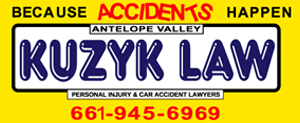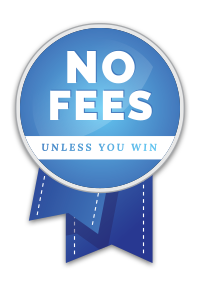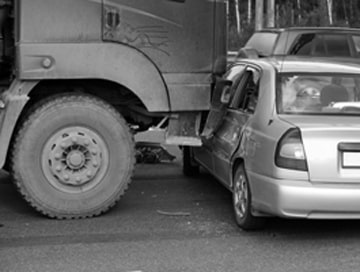
California sunshine, open roads, and sweet, sweet rideshare freedom… all within reach! Before you grab the wheel and zoom off, there’s a crucial pit stop: Lyft or Uber?
Both are titans of the ride-hailing world, but in California, choosing the right one makes all the difference. Think of this guide as your cheat code, unlocking the unique requirements for each platform. Newbie or pro, understanding these essentials is your launchpad to a smooth California rideshare adventure.
Earning potential? We got you. Eligibility? Covered. This roadmap equips you to navigate like a boss, making sure your ridesharing journey is epic. So buckle up, let’s dive into the distinct prerequisites for Lyft and Uber in the Golden State, and claim your ridesharing destiny!
Lyft Driver Requirements in California
Age and Driving Experience
To qualify as a Lyft driver in California, you must meet certain age and driving experience criteria. Typically, drivers must be at least 21 and possess a valid driver’s license. Additionally, Lyft may require a minimum of years of driving experience to ensure your familiarity with the road.
Vehicle Requirements
Lyft imposes specific vehicle requirements for drivers in California. Your vehicle must meet specific standards regarding age, condition, and features. These requirements often include model year, vehicle type (e.g., sedan, SUV), and cleanliness standards.
Background Check and Driving Record
You’ll undergo a thorough background check and driving record review as part of the Lyft driver application process. This step ensures passenger safety and maintains Lyft’s service standards. Any history of serious traffic violations or criminal offenses may disqualify you from becoming a Lyft driver.
Insurance Requirements
Lyft requires all drivers to maintain valid auto insurance coverage that meets the company’s standards. In California, this typically includes liability insurance coverage that meets state requirements and any additional coverage required by Lyft’s insurance policy.
Additional Considerations
In addition to the basic requirements outlined above, other considerations may be considered when becoming a Lyft driver in California. These may include maintaining a high driver rating, adhering to Lyft’s community guidelines, and complying with local regulations or ordinances.
Optional: For example, in a recent court ruling, California rideshare drivers’ classification as independent contractors has been upheld, thanks to the affirmation of Proposition 22.
This means drivers for Uber, Lyft, and other app-based services will not be considered employees and thus won’t receive guaranteed benefits like unemployment insurance and paid sick leave.
However, the ruling has sparked controversy, with critics arguing that it undermines worker protections and gives too much power to large companies. On the other hand, supporters believe it maintains flexibility and earning potential for drivers. As the debate surrounding Proposition 22 and the gig economy’s future persists, this decision temporarily stabilizes California’s rideshare industry and its drivers.
Uber Driver Requirements in California
Age and Driving Experience
To become an Uber driver in California, you must meet certain age and driving experience criteria. Generally, Uber requires drivers to be at least 21 years old and have a minimum number of years of driving experience. This ensures drivers are familiar with the road and can safely transport passengers.
Vehicle Requirements
Uber sets specific vehicle requirements for drivers in California. Your vehicle must meet certain age, condition, and features standards. These requirements typically include model year, vehicle type (e.g., sedan, SUV), and cleanliness standards.
Background Check and Driving Record
As part of the Uber driver application process, you’ll undergo a comprehensive background check and driving record review. This step ensures passenger safety and maintains Uber’s high service standards. Any history of serious traffic violations or criminal offenses may disqualify you from becoming an Uber driver.
Insurance Requirements
Uber requires all drivers to maintain valid auto insurance coverage that meets the company’s standards. In California, this usually includes liability insurance coverage that meets state requirements and any additional coverage required by Uber’s insurance policy.
Additional Considerations
In addition to the basic requirements outlined above, other considerations may be considered when becoming an Uber driver in California. These may include maintaining a high driver rating, adhering to Uber’s community guidelines, and staying current with local regulations or ordinances.
Key Differences Between Lyft and Uber Requirements
Variations in Age and Driving Experience
While both Lyft and Uber require drivers to be at least 21 years old, there may be differences in their specific driving experience criteria. Lyft and Uber may have varying minimum requirements for years of driving experience to ensure driver competence and safety.
Age and Experience:
- Lyft: Minimum age of 21 with one year of driving experience (three years if under 23).
- Uber: Minimum age of 21 with three years of driving experience.
Differences in Vehicle Specifications
Lyft and Uber often have distinct vehicle requirements for drivers. These differences may include variations in the acceptable model years, vehicle types allowed (such as sedans or SUVs), and cleanliness standards. Drivers need to familiarize themselves with each platform’s specific vehicle specifications.
Vehicle Specifications:
- Lyft: Four-door car, truck, or minivan, model year 2008 or newer (exceptions for specific hybrid models).
- Uber: Four-door car with five to eight seats, model year 2011 or newer.
Contrasts in Background Check and Driving Record Criteria
Although both Lyft and Uber conduct background checks and review driving records as part of their driver screening process, there may be differences in their criteria for disqualifying offenses. Certain infractions that might disqualify a driver from one platform may not necessarily do so from the other. Understanding these distinctions is crucial for aspiring drivers.
Background Checks and Driving Records:
- Lyft: National criminal background check, motor vehicle records check, and three-year driving history review.
- Uber: A seven-year background check, including criminal records, driving history, and DMV record (varies by city).
Variances in Insurance Requirements
While Lyft and Uber both mandate that drivers maintain valid auto insurance coverage, there may be differences in their insurance requirements. This could include variations in the minimum coverage limits or additional insurance provisions. Drivers should carefully review the insurance requirements of each platform to ensure compliance.
Insurance Requirements:
- Lyft: Personal auto insurance policy meeting California minimums with Lyft coverage activated during rides.
- Uber: Personal auto insurance policy meeting California minimums with Uber commercial insurance kicking in when accepting rides.
Unique Considerations for Each Platform
In addition to the core requirements outlined above, each platform may have unique considerations or preferences. This could encompass factors such as preferred vehicle models, incentives or bonuses for drivers, and differences in driver support or assistance programs. Understanding these nuances can help drivers decide which platform best aligns with their preferences and goals.
Unique Considerations:
- Lyft: Offers “Express Drive” program for renting eligible vehicles to meet requirements.
- Uber: Offers different vehicle tiers like UberXL for larger groups and Uber Black for luxury rides.
How to Become a Driver for Lyft or Uber in California
Application Process:
- Lyft: Begin by downloading the Lyft Driver app and completing the application, which includes providing personal information, vehicle details, and consent for background checks.
- Uber: Start by signing up online or through the Uber Driver app. Fill out the application, which involves providing personal information, vehicle details, and consent for background screening.
Required Documentation:
- Lyft: You’ll need a valid driver’s license, vehicle registration, proof of insurance, and, in some cases, a vehicle inspection.
- Uber: Similarly, you’ll need a valid driver’s license, vehicle registration, and proof of insurance, and you may need to undergo a vehicle inspection.
Training and Onboarding:
- Lyft: After passing the background check, Lyft provides resources and guides to help you get started. You may also have the option to attend in-person or online training sessions.
- Uber: Upon approval, Uber offers online training modules and resources to familiarize you with the app and best practices for driving. You’ll also have access to support channels for any questions or concerns.
Challenges and Considerations for California Drivers
California’s sun-drenched roads call to aspiring rideshare drivers. Still, the journey from application to open road can be challenging sailing. Beyond meeting platform requirements, California drivers face a dynamic landscape of challenges and considerations. Buckle up as we navigate these potential bumps:
Regulatory changes and compliance
California’s ever-evolving rideshare regulations can feel like a dizzying carousel. Stay informed about updates like minimum wage increases, emissions standards, and potential changes to driver classifications. Remember, non-compliance can lead to penalties and even deactivation.
Potential hurdles in meeting requirements
Maintaining a clean driving record, keeping your vehicle in top shape, and navigating insurance complexities can be demanding. Be proactive in monitoring your eligibility and consider the potential financial implications of car maintenance and insurance upgrades.
Adapting to platform policies and updates
Each platform has its own set of rules and expectations, from acceptance rates to cancellation policies. Stay updated on changes, as adapting quickly can prevent friction and maintain good standing. Explore uncharted territories like surge pricing and bonus programs to maximize earning potential.
Beyond these, consider factors like:
- Competition: California’s vibrant rideshare scene means staying competitive. Hone your customer service skills, be reliable, and explore niche markets to stand out.
- Personal Safety: Prioritize your safety by understanding passenger behavior, setting boundaries, and utilizing platform safety features responsibly.
- Work-Life Balance: Ridesharing offers flexibility, but managing unpredictable schedules and income fluctuations requires careful planning and time management skills.
The challenges California presents can also be stepping stones. By staying informed, adaptable, and prioritizing both safety and customer service, you can navigate the dynamic landscape and find success on your rideshare journey.
Remember, preparation, proactive research and a dedication to continuous learning are crucial for a smooth and rewarding experience.
Signing-Up To Drive For Uber/Lyft FAQs
- How do I start the application process for driving with Uber or Lyft?
- What documents do I need to provide during the application process?
- Answer: Commonly required documents include a valid driver’s license, vehicle registration, proof of insurance, and, in some cases, a vehicle inspection report. Check the specific requirements outlined by Uber and Lyft for your city.
- Helpful Links: Lyft Driver Application Requirements, Uber Vehicle Requirements
- Are there any training or onboarding sessions required before I can start driving?
- Answer: Both Uber and Lyft typically require drivers to complete training or onboarding sessions before they can start driving. These sessions may cover topics such as using the driver app, providing excellent customer service, and understanding local regulations.
- Helpful Links: Lyft Driver Requirements, Uber Background Checks
- How long does it take to get approved as a driver for Uber or Lyft?
- Answer: The approval process can vary, but in many cases, it takes about 1-2 weeks to complete the application, undergo background checks, and receive approval. Factors such as the completeness of your application and the volume of applicants in your area can impact the timeline.
- Helpful Links: Lyft Driver Application Requirements, Uber Requirements
- What happens if my application is rejected? Can I reapply?
- Answer: If your application is rejected, Uber and Lyft typically provide information on the reasons for rejection. You can often address any issues and reapply after a certain period. Review the feedback provided and take steps to rectify any problems before reapplying.
Contact the Uber & Lyft Accident Attorneys in California at Kuzyk Personal Injury & Car Accidents Lawyers Today!
At Kuzyk Personal Injury & Car Accidents Lawyers, we recognize individuals’ immense challenges after being involved in an Uber & Lyft accident. Our dedicated team is here to support you every step of the way, understanding the physical, emotional, and financial toll these incidents can take. With our extensive experience in negotiating with insurance firms and pursuing legal action against responsible parties, we are committed to advocating for your rights.
Contact us today, and let us help you navigate towards a fair resolution. Your well-being is our priority, and we’re here to provide the guidance and support you need during this difficult time.













